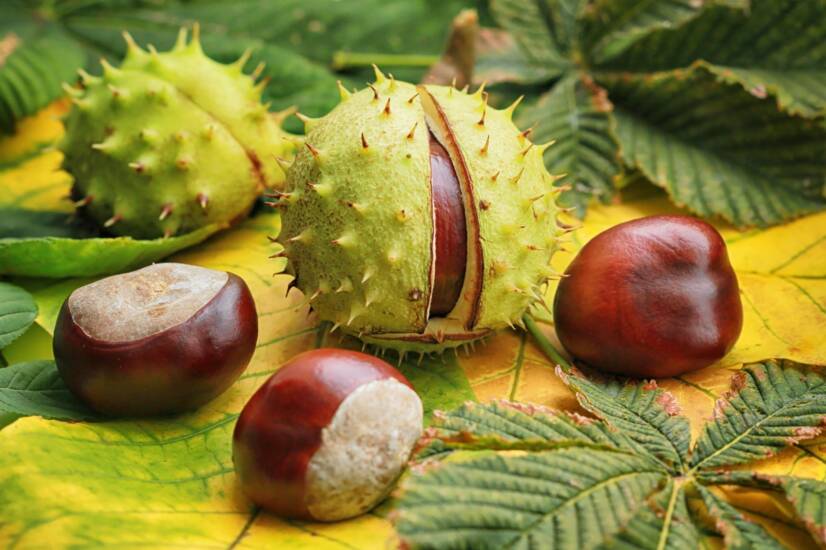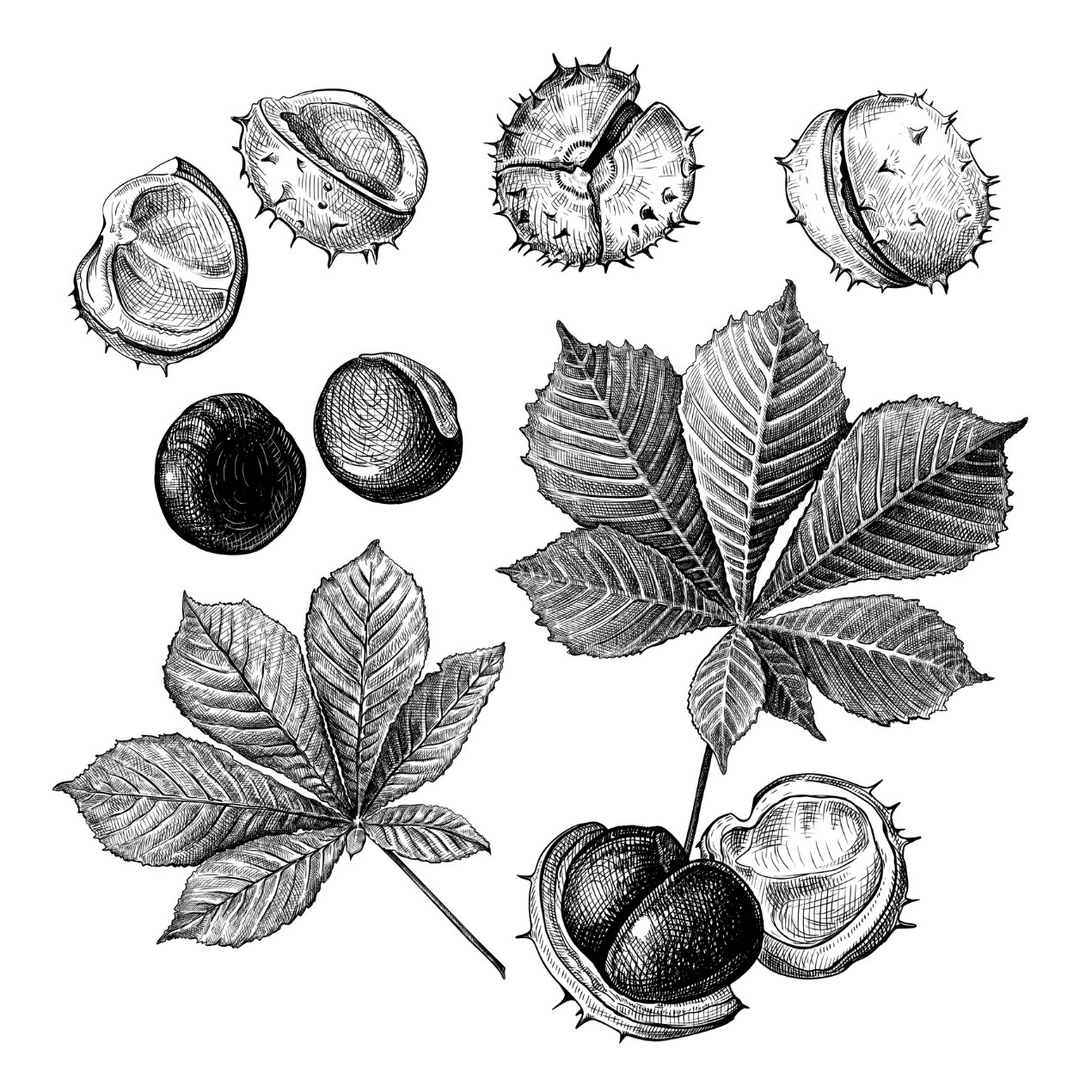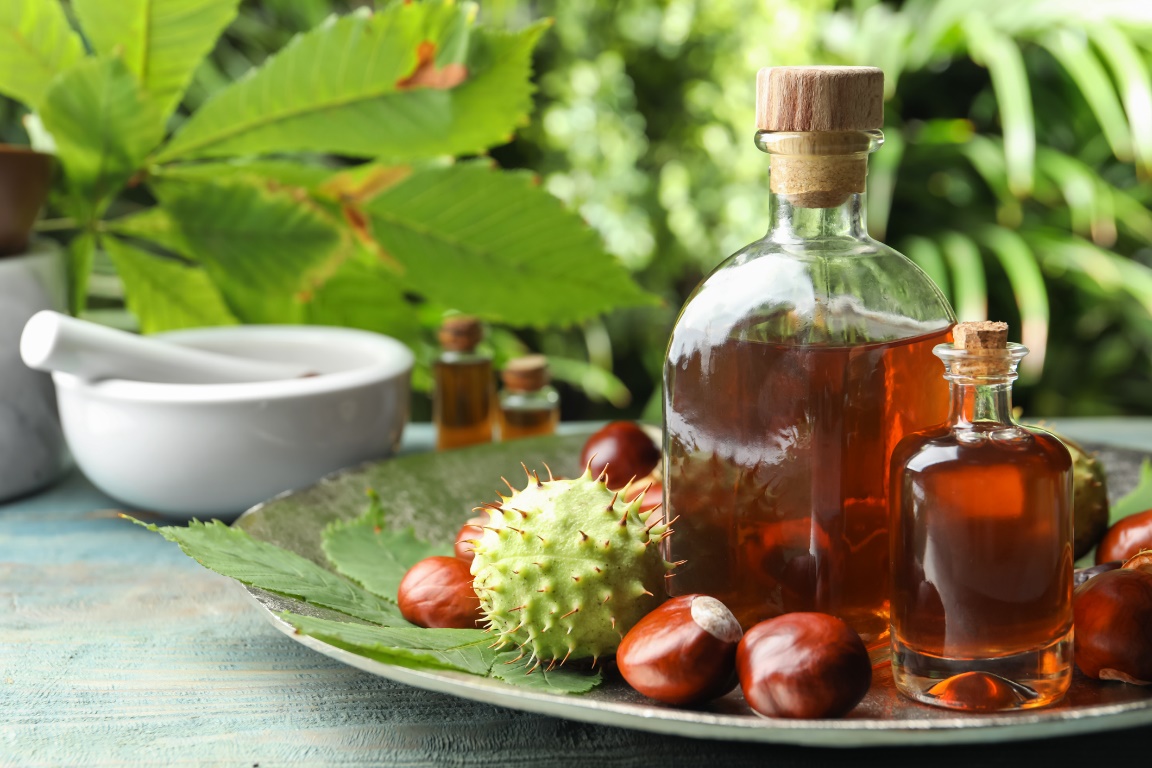- Dionýz Dugas - 500 best recipes of folk healing
- tsmg.sk - Horse Chestnut
- solen.sk - PHYTOPHARMACY AND HERBAL ORIGINS USED FOR THE TREATMENT OF PERIPHERAL AND CEREBRAL DISORDERS, doc. PharmDr. Juraj Sýkora, CSc, Department of Pharmacy, Faculty of Health Specialization Studies, Slovak Medical University, Bratislava, PharmDr. Anita Jančovičová, Apatika Pharmacy, Bratislava.
- verywellhealth.com - Natural treatment of varicose veins
- britannica.com - Horse Chestnut
- forest.jrc.ec.europa.eu - Aesculus hippocastanum in Europe: distribution, habitat, use and threats
- researchgate.net - Overview of the genus Aesculus L.: ethnobotany, phytochemistry and pharmacological activities
Horse chestnut: What is it and what effects does it have?

Horse chestnut is a tree with medicinal properties. It contains the substance aescin, which improves blood circulation, especially in the lower limbs.
Characteristics
The horse chestnut (Aesculus hippocastanum) is often found in parks or along roadsides. It is a beautiful mature tree, also popular in spa parks. The flowers, young leaves and fruit, i.e. chestnuts, contain medicinal substances.
History
The horse chestnut came to Europe from Turkey and the Balkans. At that time it was used to treat shortness of breath in horses.
In China, the Aesculus chinensis tree was used as an analgesic to treat chest enlargement and chest and abdominal pain, as well as malaria, dysentery and heart disease.
Horse chestnut was first described as a medicinal plant in the 16th century by Matthioli.
According to superstition, horse chestnuts protect against evil.
There are other plants of this subfamily growing in the world. Aesculus turbinata has larger leaves compared to A. hippocastanum, even 60 cm in size. A. indica has pointed leaves and attractive spines.
A. carnea is a hybrid of several plants of this species. It grows up to 20 m tall and has purple spines. The seeds of A. pavia and A. flava were used by American Indians to calm fish when hunting them.
An extract of the seeds was used to soothe earaches and colic. Powder from the bark of the tree was used for sprains, sore ulcers, or to soothe toothaches.

As the active ingredient of horse chestnut, aescin ranks among:
- spasmolytics - relax smooth muscles
- veno-pharmaceuticals - protect blood vessels
- anti-inflammatory agents
- antiobesity - a remedy against obesity
- antioxidants - reduces oxidative stress
- antigenotoxics - cancer prevention
A standardized extract of horse chestnut is used for the following problems:
- Chronic vascular insufficiency
- Haemorrhoids, varicose veins
- Inflammation of veins and thrombosis
- Post-traumatic bruising (hematomas) and swelling (edema)
Aescin reduces swelling and decreases capillary permeability. Increases vascular tone, i.e. tension.
Internal use
Horse chestnut tea circulates all organ systems of the body, improves blood circulation even in the lower limbs. It is suitable for menstrual difficulties. It improves blood circulation in the uterus, reduces blood clotting, dilates blood vessels.
This tea has anti-inflammatory effects. It is used in the treatment of sciatica, rheumatism, varicose veins, inflammation of veins, thrombosis, disorders of lymphatic circulation, for example, post-traumatic.
It is also suitable for the treatment of vertebrogenic algic syndromes.
Aescin has also been found to be effective against obesity and reduces oxidative stress of cells.
A tea mixture is taken.
In high doses, it can cause headaches and vomiting. Therefore, it should be taken in controlled doses and after consulting a physician.
External use
The ointment is prepared from lard, beeswax and raw chopped chestnuts.
The oil is extracted from the seeds and used to treat rheumatism.
To make the tincture, place finely chopped horse chestnut fruits in a jar. Pour alcohol up to the top, seal and leave to infuse in the light for 6-8 weeks.
Later, the alcohol will take the form of a gel. Strain the finished tincture and refrigerate.
It can be rubbed on the lower limbs for varicose veins, but preferably after consulting a doctor.

Harvesting and storage
The horse chestnut is a deciduous tree up to 30 metres wide with a massive crown. It has resinous, sticky, red-brown buds. It is widespread in Europe, but also in North America.
The leaves are palmate, broad, petiolate, seven- to nine-lobed, serrated at the margins. The flowers are five-lobed, bisexual, white with reddish-brown spots. They are densely arranged in 30 cm long perianths.
The fruit is a spiny, prickly capsule, the fruit changing from green to brown. It contains 1-3 seeds (chestnuts) about 3-4 cm in size.
The chestnut tree is also a honey bee-friendly tree.
The fruit drops in September-October, when autumn begins, and is harvested then.
Store the pulp, oil or juice in glass containers, preferably dark.
The substances contained are saponins (aescin makes up to 13%), flavonoids, tannins, carotenoids, starch and coumarin.
Contraindications
Patients with liver and kidney disease should avoid long-term treatment.
In thromboembolic disease it is not advisable to use horse chestnut preparations.
Due to changes in blood circulation and passage into milk, it is not recommended to take preparations from this plant during pregnancy and during lactation.
It may potentiate the effects of certain drugs in the anticoagulant group.
Side effects
Dietary supplements containing aescin are well tolerated.
At high doses, headaches and gastrointestinal (digestive) upset may occur when taken internally.
Itching and contact dermatitis (inflammation of the skin) may occur with external use.
Sometimes an allergic reaction to one of the substances in the medicine may also occur.
Nephrotoxic effects (kidney damage) have also been described at high doses.
Adverse effects such as nausea, vomiting, cardiac or respiratory failure, even death, have been observed when consuming the raw parts of the plant. Doses should therefore be controlled.
The usual dose is 600 mg per day, equivalent to 100 mg of aescin. The maintenance dose is lower.
Tea, leaves, flowers, even fruits must be properly processed as they can be harmful to the body.
Interesting facts
In 2006, researchers conducted a study comparing the effect of horse chestnut extract with placebo in chronic (long-term) venous insufficiency.
They concluded that the use of the active ingredient resulted in a reduction in lower limb pain and swelling compared to placebo.

The isolated essence or extract of the plant itself is used therapeutically.
Aescin used in a test tube in vitro alleviated colon cancer. Aescin isolated from A. chinesis was effective in a test tube (in vitro) on acute and chronic myeloid leukaemia (reduction of proliferation - cell division). The treatment of cancer in this case appears optimistic.
The active substance aescin can be prescribed by a doctor in the form of a medicine or a food supplement. There are also controlled preparations with this substance on the market.
The fruit of the tree known as chestnuts contains coumarin. Coumarin is added to sunscreens because it protects against ultraviolet radiation.










